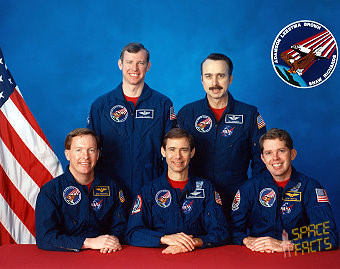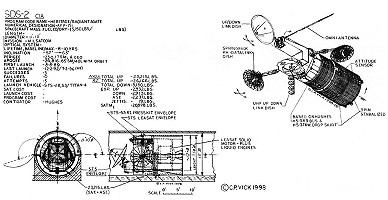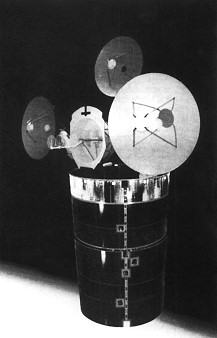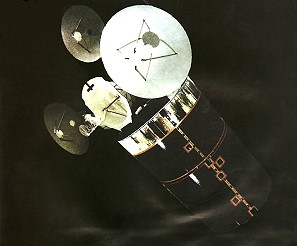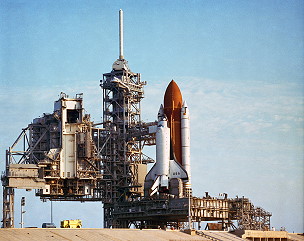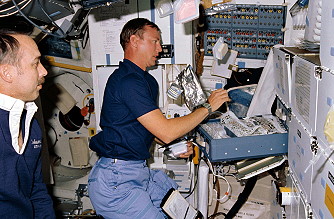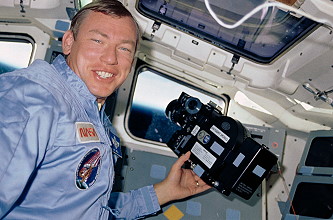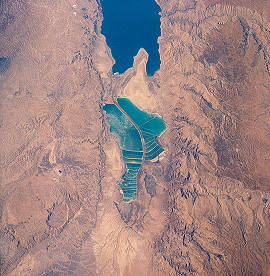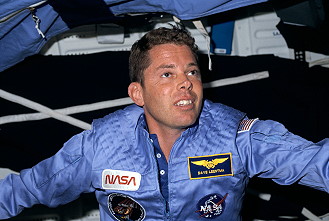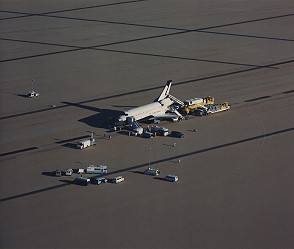Launch from Cape Canaveral (
KSC) and
landing on the Edwards
AFB, Runway
17.
This flight was the
fourth mission dedicated to Department of
Defense, and most information about it remained classified. For the fourth
time,
NASA did not provide pre-launch commentary to the
public until nine minutes before liftoff. It was the second military mission
without a
MSE among the crew members.
The crew
deployed the military satellites KH-12 and Ferret into orbit.
Observation and photo experiments for visibility of small structures on Earth
surface were done.
Other sources suggest that USA-40 was one of the
deployed satellites. This is a second-generation Satellite Data System (SDS)
relay, similar to those likely launched on
STS-38 and
STS-53.
These satellites had the same bus design as the LEASAT satellites deployed on
other shuttle missions, and were likely deployed in the same
fashion.
The mission marked the first flight of an 11-pound
human
skull, which served as the primary element of "Detailed Secondary Objective
469", also known as the In-flight Radiation Dose Distribution (IDRD)
experiment. This joint
NASA/
DoD experiment was designed to examine the penetration
of radiation into the human cranium during spaceflight. The female skull was
seated in a plastic matrix, representative of tissue, and sliced into ten
layers. Hundreds of thermo-luminescent dosimeters were mounted in the skull's
layers to record radiation levels at multiple depths. This experiment, which
also flew on
STS-36 and
STS-31, was located in the shuttle's
mid-deck lockers on all three flights, recording radiation levels at different
orbital inclinations
The
Shuttle Lee-side Temperature Sensing
(SILTS) infrared camera package made its second flight aboard Columbia on
this mission. The cylindrical pod and surrounding black tiles on the orbiter's
vertical stabilizer housed an imaging system, designed to map thermodynamic
conditions during reentry, on the surfaces visible from the top of the tail
fin. Ironically, the camera faced the port wing of Columbia, which was breached
by superheated plasma on its disastrous final flight, destroying the wing and,
later, the orbiter. The SILTS system was used for only six missions before
being deactivated, but the pod remained for the duration of Columbia's career.
Columbia's thermal protection system was also upgraded to a similar
configuration as Discovery and Atlantis in between the loss of Challenger and
STS-28, with many of the white LRSI tiles replaced
with felt insulation blankets in order to reduce weight and turnaround time.
One other minor modification that debuted on
STS-28 was the move of Columbia's name from its
payload bay doors to the fuselage, allowing the orbiter to be easily recognized
while in orbit.
Postflight analysis of
STS-28 discovered unusual heating of the thermal
protection system (TPS) during re-entry, caused by an early transition to
turbulent plasma flow around the vehicle. A detailed report identified
protruding gap filler as the likely cause.
![]()

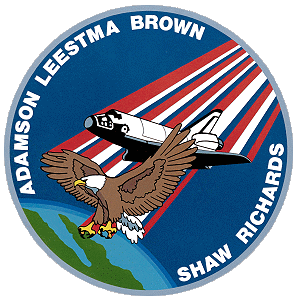

![]()
